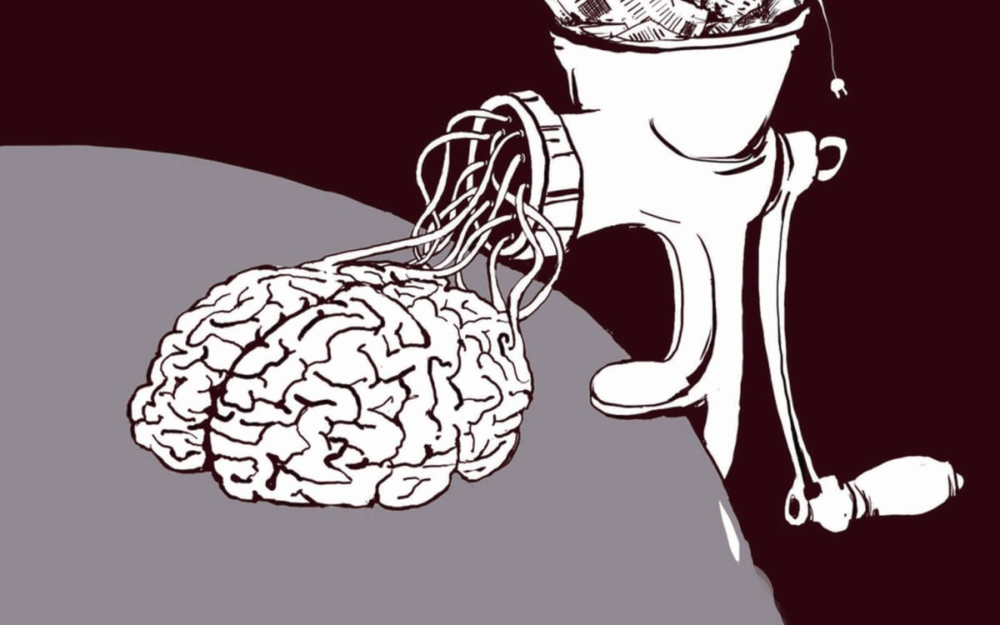How Lying Changes the Human Brain
“If you tell the truth, it becomes part of your past. If you lie, it becomes part of your future.” — John Spence
When a person lies constantly, over time they may start to believe their own lies. Emotional responses shut down—they stop reacting to their own dishonesty. The complete lack of feelings makes it easy to keep lying without the slightest pang of conscience. Lying becomes a habit that’s not so easy to break. Neurologists claim that a liar’s brain actually works differently from that of other people.
How does this happen? It’s simple: through regular “training.”
One of the fundamental properties of the human brain is its plasticity. So it’s not surprising that lying is an acquired skill, just like any other. If that’s the case, all you need to do is practice every day to maintain your “qualification.” For example, some people are passionate about math, design, writing, and so on—and this has a profound effect on the brain. The same goes for deception.
“If you tell the truth, it becomes part of your past. If you lie, it becomes part of your future.” — John Spence
Psychologists and sociologists have always been interested in the nature and world of deception. But in recent decades, thanks to major advances in diagnostic methods, it’s neuroscience that has given us the most valuable—and at the same time, very alarming—information. Why alarming? If we were to say right now that becoming a liar is easy—thanks to consistent training and habit formation—it might surprise many people.
But it’s true: you start with a small lie, and then it becomes a habit. Over time, the brain becomes desensitized to it. Step by step, lying no longer feels shameful or wrong—it becomes a way of life…
The Liar’s Brain and the Amygdala
You’ve probably noticed that well-known and popular people often lie, and about almost anything. For example, there are politicians who never seem to tell the truth. Yet they’ll never admit to lying—instead, they’ll passionately defend their “rightness.” This way, they justify any of their actions, even blatantly criminal ones. Is this just part of their job as public officials, or is there something biological at play?
Tali Sharot, a professor of neuroscience at University College London, concluded that this phenomenon is explained by both biology and regular practice. One area of the human brain is directly linked to the tendency to deceive: the amygdala. The liar’s brain actually undergoes a complex process of “self-training,” and this practice helps them get rid of any feelings of guilt or shame for good.
The journal Nature Neuroscience published a fascinating article on this topic. The authors dug even deeper. To clearly explain the nature of deception, they offer the following example. Imagine a young man who has risen to a high position in his company. Such people want to maintain the trust of colleagues they used to hang out with after work, while also strengthening their authority as a boss. So—they start to lie. At first, it’s small and occasional, but over time, it becomes more frequent and significant.
These “dissonances,” these little lies, activate the amygdala—a tiny, almond-shaped area of the brain located in the white matter of the temporal lobe, about 1.5–2.0 cm behind the temporal pole. It’s responsible for memory and emotions, and at the same time, determines how ready a person is to deceive.
Eventually, this young manager lies constantly—it’s easier, more comfortable, and, in his view, more effective. Now his job is inseparable from regular, targeted deception. When this behavior becomes a habit, the amygdala stops reacting to it. It becomes “super-tolerant” to dishonesty and stops sending any emotional signals. The person loses the sense of guilt they once had at the start of their “lying career,” doesn’t worry about being exposed, and even starts to believe their own lies.
The Brain Adapts to Lying
In other words, the liar’s brain adapts to deception. Lying makes the brain work differently. People who lie need two main things: a good memory and emotional indifference.
This is exactly what Dan Ariely, professor of psychology at Duke University, says in his book The (Honest) Truth About Dishonesty: How We Lie to Everyone—Especially Ourselves. In it, he thoroughly examines the liar’s brain, explaining the nature of this phenomenon from a scientific perspective, and discusses many other related neurological processes.
Dr. Ariely conducted a series of experiments and found that the brains of pathological liars have 14% less gray matter, but 22–26% more white matter in the prefrontal cortex. What does this mean? Essentially, the liar’s brain creates many more connections between memories and ideas. A larger network of connections means they can access these associations faster and lie more convincingly and consistently. This answers the question of how deception becomes second nature. It all starts with cognitive processes that get stronger with each “training session.” At the same time, the brain starts to shut off emotions when a person lies. This means they no longer feel any discomfort or guilt.
Dr. Ariely writes that, if you think about it, this is truly frightening. The fact that our amygdala stops responding to certain things means we can easily lose what makes us human.
When you no longer notice how your lies affect other people and their lives, you lose the natural kindness that is inherent in every human being.
Thus, the liar’s brain is shaped by very unsavory and dark motives. Inside a person for whom lying has become a way of life, there is only one thing: the pursuit of power, status, dominance, and personal gain. This is the ideology of people who, at some point, decided to put themselves above everyone else.



